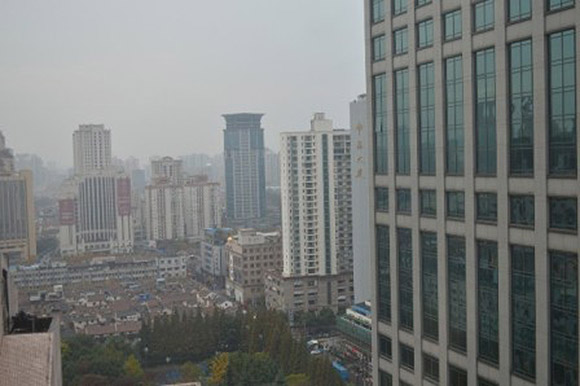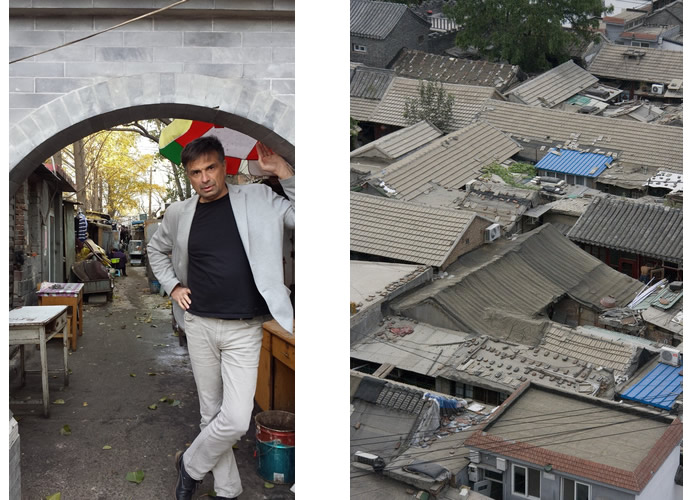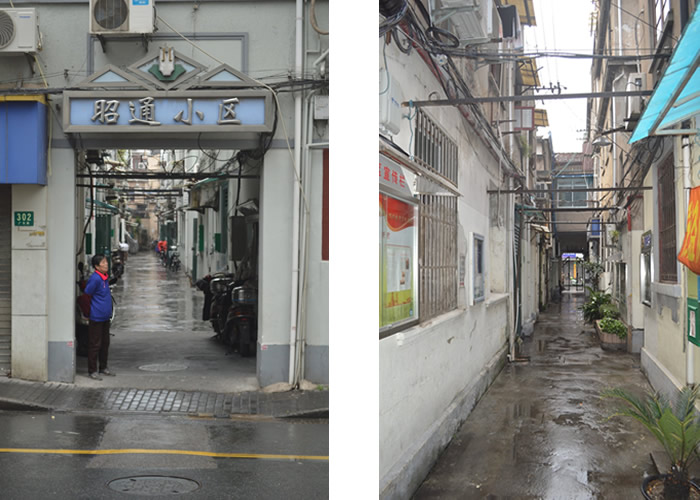Traditional residential areas in Beijing and Shanghai
Of course, this is always the case, buildings intended for the social elite attract the most attention. In China, these are magnificent palaces and temples built for members of the political, ideological and economic elite of that great country. In Beijing, the traditional seat of the political powers, the buildings of the imperial family and their communist successors are in the foreground, and in Shanghai, the center of economic power, attention is drawn to the mansions, clubs and hotels of domestic and foreign capitalists. All these objects encourage the imagination of an exciting life with the taste of luxury and the smell of oriental glamour.
But, let’s not be fooled, the real life of ordinary, small people is something completely different. In order to take a peek into their lives, let us this time pay attention to the traditional residential neighborhoods of ordinary Chinese citizens in the two most important and largest Chinese cities, and let the additional motive be that these neighborhoods are inexorably disappearing under the influence of China’s economic development, so it is not entirely clear whether they will anything authentic of them to be preserved at all.
Such traditional residential districts in Beijing are called hutong, and in Shanghai the terms lilong and longtang are used equally for them. In short, both hutong and lilong are rectangular neighborhoods located between four main streets, usually about 200-300 meters long and wide, which can only be entered through two or three gates, and then through a network of narrow passages to reach individual houses.

Despite this basic similarity, the differences between Beijing’s hutong and Shanghai’s lilong are great, primarily due to the different history and physiognomy of those cities themselves. Peking (bei jing = northern capital) is an old, traditional city, the seat of undisputed imperial power, far from the sea, whose inhabitants never had the opportunity to see a foreigner at all, and where the imperial power seemed eternal and firmly based on the heavenly Taoist principles. In such conditions, hutongs were formed many centuries ago and were the embodiment of the ancient, “eternal” principles of Chinese philosophy and the ancient village building traditions based on them.
Shanghai (shang hai = on the sea) is a modern, cosmopolitan, liberal city that grew rapidly in the 19th and 20th centuries during the dominance of European settlers and during that period lilong, a popular form of housing, was spontaneously formed, which practically took over the entire city. The architectural formation of the first residential areas in Shanghai had a similar, though less strict, Taoist base, as it was interpreted in the villages of Eastern China, but soon everything changed under the decisive influence of a specific Western European architectural tradition. This was the tradition of building houses in a row. , which characterized the era of the industrial revolution, when the influx of population into European cities was the greatest and when it proved to be the most economically acceptable solution.
Hutong – a traditional residential district in Beijing
The way the Beijing hutong is designed is closely related to the principles of traditional Chinese metaphysics. For centuries, China was a closed, self-sufficient country, arrogantly convinced of its superiority over the nations of the rest of the world, and the city of Beijing was the earthly embodiment of the perfect order that reigns in heaven. In the center of the city, as a counterpoint to the celestial North Star, there is the imperial palace – the Forbidden City, whose interior arrangement is a model of the earthly form of heavenly perfection. The Forbidden City itself has the shape of a rectangle with sides in a perfect north-south and east-west direction, which has led to the fact that all the streets in Beijing, to this day, are oriented in this way despite all subsequent social and architectural changes.
Immigrants to the city built their family properties, one next to the other, according to the traditional model that had already been established for centuries in the villages of northern China from which they came, and their planned grouping in the space between the main streets created the hutong.
Such a traditional country estate, known as siheyuan, is itself an embodiment of ancient Chinese metaphysics. It consists of an inner courtyard with houses of a strictly defined purpose, on all four sides around it. It is interesting that the houses of ordinary citizens, and even high-ranking officials, who lived near the Forbidden City, were almost exactly the same, always one-story, with traditional concave roofs and exclusively gray, because the colors (red, gold, blue…) were reserved only for the objects of the imperial family. The arrangement of the space was aligned with feng shui, that is, the principles of mystical life energy flows, and the end result was a strange mixture of rationality and superstition. Today, in the West, we look at feng shui as a nice, harmless mod and we are happy when we notice some similarities with our Western, rational solutions. It seems less endearing when we think that our colleagues, the ancient Chinese builders, were born, lived and died in the world of “good” and “bad” spirits, without ever asking themselves what of it has and what doesn’t have real worldly meaning.
The entrance to the siheyuan courtyard was on the side where “good energy” comes from, and to prevent “bad energy”, special, free-standing walls were built, which served no other purpose. The main house of the siheyuan, however, quite rationally, was always on the north side to face the south. Placing one siheyuan next to another creates a traditional Beijing residential neighborhood – a hutong. All of this fit perfectly into the planned building of the imperial capital, where everything is in the direction of perfect north, south, east or west. The formation of modern Beijing and its hutongs began in the 13th century, during the reign of the Mongol emperor Kublai Khan, who appreciated and supported traditional Chinese culture. In this regard, let us note that siheyuan and hutong are words of Mongolian origin despite their essential connection to Chinese tradition.
While the imperial power and faith in the cosmic order were firm, so was the structure of the hutong. But as the imperial power began to waver, so did the order in the residential quarters of the subjects, so the estates were divided and rotated, which complicated the entrances to the courtyards and the flow of traffic in the quarter. With the collapse of the empire, their tradition began to die out and hutongs turned into chaos, and in recent decades they have been demolished en masse to make way for boulevards and high-rise buildings.

The remaining hutongs today are surrounded by walls, far from the eyes and difficult to approach. If you do get to one of them, entry inside is practically forbidden for foreigners, and in any case extremely unpleasant, because you feel like an uninvited guest entering the intimate space of the city’s poorest residents. Apparently, inside those poor hutongs, there is a strong smell of urine.
Beijing’s city authorities have expressed their intention to protect some of the traditional hutongs from demolition, but it remains to be seen how they intend to implement this.
Lilong – a residential area in Shanghai
The formation of modern Shanghai began in 1842, when the Chinese authorities were forced to allow foreigners to move in and start businesses in the so-called. “Concessions”, restricted zones with a special legal system. In the new circumstances, the great economic success of the city followed, which culminated in the period between the two world wars. Although it was not initially intended as such, the settlement of the Chinese in the “Concessions” was soon completely liberalized and newcomers settled in the city in such large numbers that Shanghai became one of the largest, if not the largest, city in the world. The need for housing was huge, so local builders had to find the right formula to fit residents from the surrounding provinces, with their lifestyle, into a city ruled by foreigners.
The first idea was, of course, to build traditional houses common in the surrounding villages in the city as well. Far from the center of political and religious power, the country houses in that part of China were much less influenced by feng shui and the Taoist tradition than those around Beijing. These were single-story wooden houses for extended families, large in width towards the street, with, as a rule, five windows facing the main street. But the influence of foreigners and the rapid social evolution fundamentally changed that tradition. Families became smaller, houses were two-story, but narrower, with only two windows facing the street, and foreigners were forbidden to use wood for fire safety reasons.
Thus, in the second half of the 19th century, a traditional Shanghai house – known as a shikumen – was created and in the following decades conquered practically the entire city. It turned out that shikumen is a type of house that is extremely suitable for the formation of “row houses” which is a literal transfer of an idea from the era of the industrial revolution, when Europe faced a similar challenge of mass population relocation to the city. The very word shikumen, which we use to denote a traditional Shanghai terraced house, literally means “stone door” which originally referred to a common wall for a whole row of houses, in which there is an entrance door for each of them.
Lilong (li=community, long=row) is a residential quarter consisting of several connected passages, in which individual shikumen are arranged in a row. Some of these passages open onto public city streets, and there is usually an ornate archway and a gate that is locked at night.
Passages are semi-public spaces and most of them can be entered freely today, with much less discomfort than when entering a modern Beijing hutong. That semi-public space is bridged by a series of steel pipes for drying laundry, incredible amounts of electrical cables and other installations are carried through it, bicycles and motorcycles are parked there, chickens are slaughtered and vegetables are chopped… all this in that two-three meter width. However, those who spend their childhood there never forget it, and thus life in shikumen has become an indispensable ingredient of the old Shanghai romance. In its heyday, the sprawling network of Shanghai lilongs was an ideal venue for a variety of illegal and semi-legal activities. Gambling, the opium trade and prostitution flourished in them, and in the most elegant shikumen Western guests were entertained by sing song girls, the Shanghai version of Japanese geisha. Foreigners liked them so much that there was a mandatory item in the annual municipal budget for foreign concessions: the maintenance of sing song bars. The Shanghai police showed no desire to enter the lilong network and deal with illegal activities, which, as it was believed, did not threaten the life of the city anyway, but gave it an additional charm.
But one specific subversive activity, started in Shanghai’s Lilongwe, will eventually come to the head of both Chinese authorities and foreign concessions, and turn people’s lives all over China upside down. Namely, the Chinese Communist Party held its first congresses in remote, inaccessible Shanghai lilongs and thus, with the sing-song song of girls, in an atmosphere saturated with revolutionary enthusiasm and opium fumes, it gloriously began its victorious path to the conquest of absolute power.

Although in today’s Shanghai, the old skyscrapers are being torn down to make way for modern skyscrapers, there are still enough of them and, at least for the moment, their survival is not threatened. Life in them is almost as romantic as it was a hundred years ago, and the impression is that the Shanghai public knows how to appreciate that.

